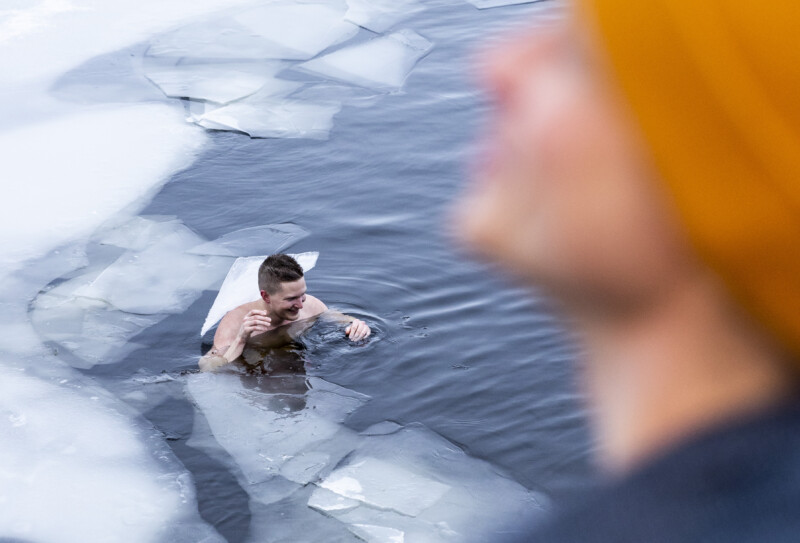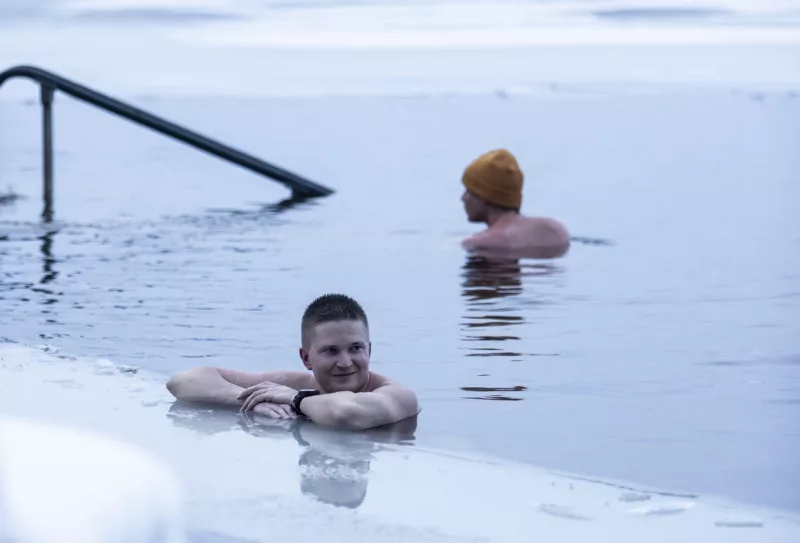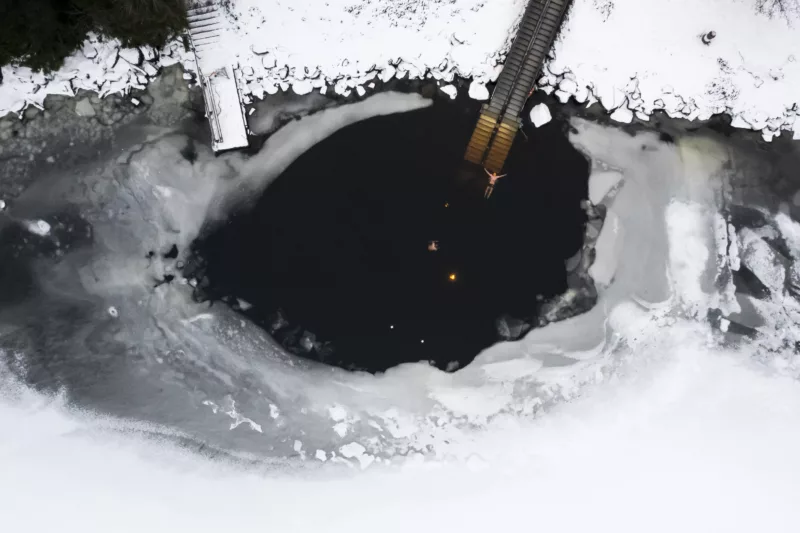
Ice Swimmers and Sauna Enthusiasts
We intentionally expose ourselves to freezing cold and scorching heat. But why?
We are experts in thermal energy storage and heat transfer, but we also know the extremes of heat and cold firsthand. Living in the north, not far from the Arctic Circle, in a land of thousands of lakes and saunas, this connection to temperature is deeply rooted in our culture. So, it’s perhaps not surprising that many of us have embraced the art—and some might say the madness—of ice swimming and sauna rituals.
One afternoon, we gathered for an ice-swimming expedition. Swimsuits? Check. Water shoes? Check. Sauna hats? Naturally.
Inside the sauna, the thermometer showed a number north of 100°C (212°F).
We stepped outside into the crisp air, walking steadily towards the icy lake, as steam rose from our bodies. The water was just shy of freezing, hovering around 1°C (34°F).
Decision time.
I took a deep breath and walked down the stairs into the icy waters of Lake Näsijärvi. For a split second, my lungs almost seized up, and a small panic threatened to creep in. But I pushed through, breathing deliberately.
The cold was sharp, a physical ache in my ankles, hips, and hands. It was pain, yes, but not the kind you run from—more like the kind you confront.

The Paradox of The Modern World
Our brains are wired with a paradoxical challenge: constant pursuit of pleasure leads to unhappiness and addiction. Yet, despite this (or perhaps because of), we’ve surrounded ourselves with a world of instant gratification. Smartphones and home delivery ensure our every whim is met with little effort. And the more we indulge, the more we need.
Psychiatrist Anna Lembke, in her book Dopamine Nation, explores how compulsive overconsumption threatens not just us but also our planet. The quick highs from dopamine rushes push us to consume more of everything, including natural resources and the climate. This is why we need something to restore balance: we need pain. The deliberate kind.
According to Lembke, pleasure and pain function like a seesaw. They occur in the same regions of the brain and strive for balance. Every time the seesaw tips toward pleasure or pain, it automatically swings back. Constantly chasing pleasure breaks the balance, dulling our enjoyment and making pain feel worse.
In short, the relentless pursuit of pleasure eventually leads to unhappiness and overconsumption.
Ice swimming helps restore balance. As it is, quite literally, a plunge into discomfort.
A Transformative Act
Some days, I manage to stay calm, counting my breaths in the icy depths. Other times, the cold drives me scrambling back to shore. Each experience is unique, and the pain feels different depending on the moment. Yet, the act itself remains transformative.
Research shows that repeated short-term exposure to cold improves both mental and physical health. Ice swimming aids recovery, boosts performance, calms restlessness, and restores energy. It may even enhance grit and deepen our connection to nature. Sauna, too, offers health benefits: it supports cardiovascular health, lowers blood pressure, and relaxes muscles. Both habits alleviate pain and reduce stress.
Together, ice swimming and sauna create lasting happiness—far more sustainable than any shopping spree. They invite us to find joy without overconsuming the planet’s resources.
As I climb out of the icy water, the pain lingers in my body. But cold and discomfort are always followed by warmth and satisfaction. Stress and worries seem to dissolve into the freezing lake.
We return to the sauna to warm up—and soon, we’ll plunge back in again.
Text: Miika Peltola, Communications Manager
Photos: Rami Marjamäki
Five Tips for Starting Ice Swimming
- Walk or bike to the ice swimming spot to warm up your body.
- Use shoes, gloves, and a hat (and a swimsuit if swimming in public).
- Move slowly and breathe mindfully. Don’t jump or dive.
- Bring a friend for safety. At first, a quick dip is enough.
- Dry off and warm up thoroughly afterward. Starting with a sauna makes it easier.
- Bonus: Reflect on the balance of pleasure and pain after your swim.
Sauna Capital
The City of Tampere, where Polar Night Energy is based, calls itself the Sauna Capital of the World. The area has numerous public saunas and ice swimming spots. Learn more: Visit Tampere
